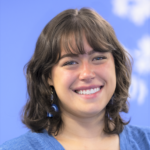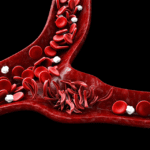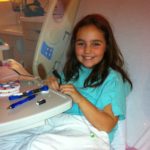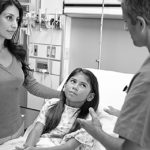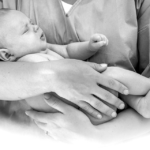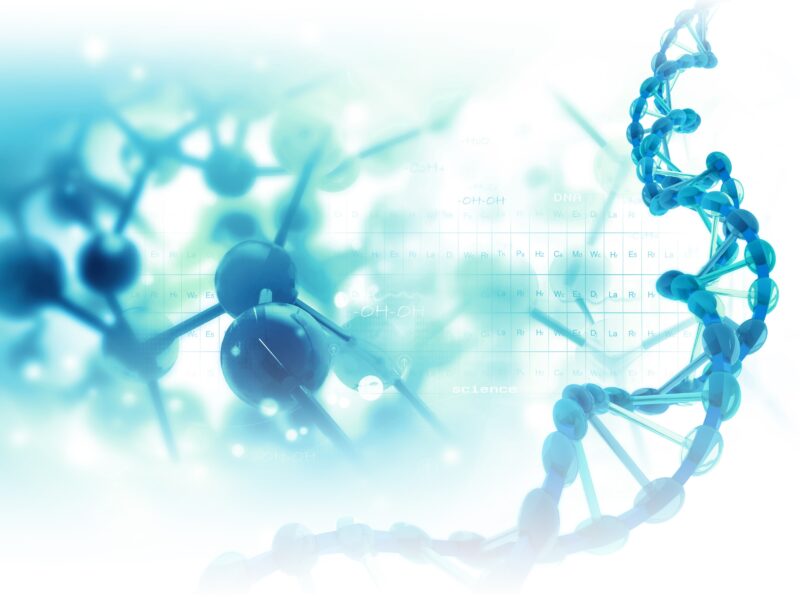Featured Researcher — Scott Harper, PhD
Featured Researcher — Scott Harper, PhD https://pediatricsnationwide.org/wp-content/themes/corpus/images/empty/thumbnail.jpg 150 150 Natalie Wilson Natalie Wilson https://pediatricsnationwide.org/wp-content/uploads/2021/06/Natalieheadshot3-2.png- November 03, 2021
- Natalie Wilson
Scott Harper, PhD, is a principal investigator in the Center for Gene Therapy at the Abigail Wexner Research Institute at Nationwide Children’s Hospital and a professor of Pediatrics at the Ohio State University College of Medicine. Dr. Harper’s primary research focus at Nationwide Children’s has been developing adeno-associated virus (AAV) based gene therapies to treat neuromuscular and neurological disorders, including muscular dystrophy (FSHD, LGMD1A), peripheral neuropathy (CMT1A, CMT2D, CMT4B3) and dominant epilepsy.
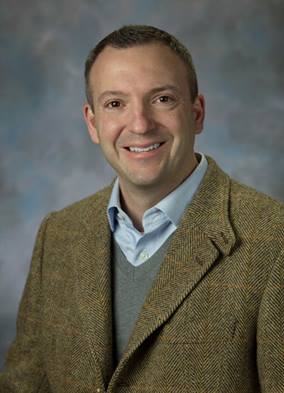
Dr. Harper’s lab has focused on developing models and studying the pathogenesis of facioscapulohumeral muscular dystrophy (FSHD). FSHD, which affects up to 870,000 individuals world-wide, is a progressive, life-long disease with no treatments available to alter its course. It arises from genetic and epigenetic changes that result in expression of the DUX4 gene, which is normally “off” in healthy muscle. When expressed, DUX4 activates pathways associated with cell death, oxidative stress, impaired muscle differentiation and muscle atrophy. Dr. Harper and his lab team have been dedicated to understanding the role of DUX4 in FSHD and developing potential therapies that can target it. In 2020, they identified a way to silence DUX4 expression in human cells, including those derived from FSHD patient muscles, and published a proof-of-concept study in Molecular Therapy: Nucleic Acids. To translate this approach to clinical care, safety and efficacy studies in the Harper Lab’s TIC-DUX4 mouse model are ongoing.
Dr. Harper earned his doctorate degree in Cellular and Molecular Biology from the University of Michigan Medical School, where he worked in the lab of Jeff Chamberlain, PhD, to develop the first generation of micro-dystrophin gene therapies for Duchenne Muscular Dystrophy (DMD). He then completed postdoctoral training in the lab of Beverly Davidson, PhD, at the University of Iowa, where he developed RNAi-based gene therapies to treat dominant neurodegenerative diseases.
Dr. Harper is also a standing member of the National Institutes of Health (NIH) Neurological Sciences and Disorders B (NSD-B) study section, the Scientific Advisory Board of the Charcot-Marie-Tooth Association (CMTA) and serves on three committees of the American Society of Gene and Cell Therapy (ASGCT). He serves as the chief scientific advisor at Armatus Bio.
Read on to learn more about Dr. Harper and his research journey.
What was your path to your current role?
I kind of “got the bug” in tenth grade biology, but at that time, I didn’t think I would be a research scientist. I was disinterested in a lot of what we were learning in high school, but I really liked biology. When I enlisted in the Navy after graduating high school, I served as a hospital corpsman for the U.S. Marine Corps 1st Battalion, 24th Marines infantry unit, but during this experience I realized that treating people directly was not for me. When I got my “G.I. Bill” to go to college, I knew I wanted to work in science but not as a physician.
I got my first real experience in a lab — a chemistry lab, not a biology lab — when I started working as an undergraduate for The Dow Chemical Company, developing new polymers with improved optical properties for making better CDs. I then began graduate school at the University of Michigan 1996. There weren’t many labs doing gene therapy back then, and I wasn’t necessarily trying to pursue gene therapy as a field. I did know, however, that I wanted to do more applied research – what we now called translational research, although that term didn’t exist at the time. I did rotations in labs doing translational work, and after I did a semester-long student rotation in Dr. Jeff Chamberlain’s lab in the spring of 1997, I ended up staying there to do the work leading to my doctorate degree.
Dr. Chamberlain and his team were trying to develop a gene therapy approach to treat Duchenne muscular dystrophy, which is caused by mutations in the DMD gene, also known as dystrophin. DMD gene therapy involved adding back missing dystrophin to muscle using viral vectors, but this was challenging because DMD is the largest known gene, and there were a limited number of vectors capable of carrying full-length DMD for gene therapy.
In the late 1990s, the Chamberlain Lab was trying solve this challenge with Adenoviral (Ad5) vectors. These were cutting-edge systems back then, but they could also provoke an unwanted immune response. Ultimately, the immune response caused by Ad5 vectors was too great an obstacle to overcome, and we needed to consider other options for DMD gene therapy.
Around that time, adeno-associated viruses (AAV) were just starting to come onto the scene as a way to deliver gene therapy. They were much less likely to trigger an immune response, but they were too small to carry a full-length DMD gene. We realized if we could shrink the DMD gene down, AAV could potentially provide a way to deliver it.
This premise turned into my doctoral thesis project — figuring out how to engineer DMD genes that were small enough to fit into AAV vectors but also highly functional. We created several versions called “micro-dystrophins.”
Fun Facts About Dr. Harper
What fictional character would you most like to meet and why?
Tony Soprano – I just find him fascinating.
What’s your favorite word, and why?
Schadenfreude. It’s interesting to me that there’s not really an English equivalent of the word, so we use the German word.
What would be your dream job if you could do anything (that wasn’t working in research)?
An astronaut. I actually applied to NASA — but obviously didn’t get selected to the astronaut program.
Favorite thing you’ve bought this year?
This year, I bought a plane ticket to Normandy, France. On that trip, I got to stand on Utah Beach with my mother 77 years after my grandfather landed there as a U.S. Army Private First Class (PFC), and was able to visit the concentration camp he helped liberate in Austria in 1944-45.
So, ultimately, I have Jeff Chamberlain’s leadership and pioneering vision to thank for starting my career in gene therapy.
Why did you decide to pursue your work at Nationwide Children’s?
In the early days of gene therapy, the first 20 years or so, the focus was on gene replacement, or adding back a missing gene. In fact, for decades, gene therapy was essentially synonymous with gene replacement. That focus left out a lot of dominant genetic disorders that would benefit from therapies that could knock down a gene, or silence it, but there was no technology for that in the early days.
Then, Andrew Fire and Craig Mello discovered RNA interference (RNAi) in worms — gene silencing by double-stranded RNA — publishing their research in Nature in 1998 and earning a Nobel Prize in 2006. It was later discovered that all eukaryotic organisms — not just worms — have a natural process of gene silencing, whereby small non-coding RNAs can inhibit the expression of other genes. The implications were huge for human gene therapy, and I saw an opportunity to explore a new area in gene therapy.
After finishing my doctorate degree, I moved to Iowa City in early 2002 to conduct postdoctoral research at the University of Iowa, focusing on developing RNAi-based gene therapy to treat dominant genetic diseases. Beverly Davidson, PhD, who is now Chief Scientific Strategy Officer (CSSO) at the Children’s Hospital of Philadelphia and the president of the American Society of Gene and Cell Therapy (ASGCT), was my mentor.
Dr. Davidson’s lab was focused on brain diseases including Huntington’s Disease and Spinal Cerebellar Ataxia Type 1 (SCA1). My interest remained in muscle disease, however. In 2006, when I started looking for faculty jobs, I focused on how to apply the RNAi technology to the muscle field — something no one was doing — so I could bring the two research areas I’d focused on as a trainee together and develop a new area of study.
As part of my job search, I wrote up a five- and 10-year plan outlining how I would start and conduct my lab. In addition to applying to postings listed in the traditional places, I decided to email my CV and research plan to people I knew at various places around the country. One of those people was Dr. Jill Rafael-Fortney, who had been a doctorate student in Dr. Chamberlain’s lab before I arrived at Michigan, and who was working at The Ohio State University College of Medicine at the time. Jill said her department at OSU wasn’t looking for new faculty but passed along my materials to Jerry Mendell, MD, who was director of the Center for Gene Therapy here at Nationwide Children’s at that time and who was interested in what I wanted to do. Dr. Mendell recruited me here to Nationwide Children’s in 2007, and I’ve remained ever since.
At that time, Research Building III hadn’t been built and our cGMP Clinical Manufacturing Facility, now located at our affiliate company, Andelyn Biosciences, was still just a concept. But I could see the vision was already there for what we’ve now become: the first place in the world where everything — seeing patients, developing therapies, making clinical-grade vectors, conducting trials — can be done in house. Nobody else was doing that, and there are still very few places in the world doing that today. That vision and the leadership of Dr. Mendell made it a “no brainer” for me to come here, and I am grateful I did.
Nationwide Children’s was also among the first academic centers to recognize the importance of investing in startup companies with the goal of commercializing research. Moving things from the academic setting into a gene therapy clinical trial can be expensive, with budgets outside the scope of typical NIH funding mechanisms. Nationwide Children’s recognized earlier than most that some kind of private partnership would sometimes be needed to bring pre-clinical innovations to the clinic and, hopefully, the market. Numerous innovative companies have emerged from our labs over the years, and the leaders of Nationwide Children’s over the last 15 years deserve an enormous amount of credit for leading these efforts.
What is your favorite part of your job?
I enjoy talking with the people in my lab and coming up with new ideas. That’s why science is so fun — you’re trying to explore areas no one’s ever explored before. The higher you move up the ranks in academia, the more your time becomes divided and the less time you have to innovate and come up with new things. I’ve been making a concerted effort in the last year or so to commit more time to exploring new areas and making that my primary mission.
In terms of one specific favorite event, perhaps the major highlight of my time here at Nationwide Children’s occurred a few years ago. As I mentioned, I stopped working on my thesis project on micro-dystrophin back in 2002, when I finished graduate school. I was proud of that work but figured that strategy would only ever be tested in mice, and I needed to move onto other things. Over the years, however, Dr. Mendell continued pursuing micro-dystrophin gene therapy with the intention of applying it to boys with Duchenne muscular dystrophy. He eventually decided to use the lead construct I designed decades before with Dr. Chamberlain, which now forms the basis of Sarepta Therapeutics’ DMD gene therapy currently in clinical trials he spearheads.
Around 2017, Dr. Mendell invited me to come to the clinic when they first administered that therapy to a human being. That was an incredibly powerful moment that I never thought in my wildest dreams I’d get to experience. Being able to witness that moment was a gift and I will always be grateful to Dr. Mendell for allowing me to be there.
What’s next?
I’ve made professor, but I have no desire to take the next steps in academia. I really just want to continue to work in our lab. My vision over the next couple of years is to continue to develop new ideas related to several diseases and get private funding for clinical trials.
For me, it feels like coming full circle. When I was in graduate school, I was focused on my own individual research projects while trying to develop other skills to help my next steps — learning to write grants and getting teaching experience. Then, I got a job as a faculty member, built a lab, taught courses and served on committees and found my time further divided. I found myself further and further away from being in the lab, which is what I liked to do most. But now, I’ve reached a point in my career when I’m doing my best to get back to making research in the lab my sole focus again.
I’ve also gotten involved with patient foundations, which often help fund early stages of research. I spoke to a patient group recently that was able to raise $1.5 million for research on an hour-long Zoom call. I also went from city to city in Australia and New Zealand talking to patient groups about the state of the field of FSHD, and I enjoy educating the patient community about we’re trying to accomplish in generating new therapies. When you’re a scientist who doesn’t spend a lot of time in the clinical setting, you can lose perspective, but this helps me put faces to the diseases I’m studying while continuing to focus, ultimately, on advancing research to treat them. Finally, I’ve also partnered with local biotech company Armatus Bio, which is licensing our technology to bring it to clinic and which I expect will help translate our work.
About the author
Natalie is a passionate and enthusiastic writer working to highlight the groundbreaking research of the incredible faculty and staff across Nationwide Children's Hospital and the Abigail Wexner Research Institute. Her work at Nationwide Children's marries her past interests and experiences with her passion for helping children thrive and a long-held scientific curiosity that dates back to competing in the Jefferson Lab Science Bowl in middle school. Natalie holds a bachelor’s degree in sociology from Wake Forest University, as well as minors in women's, gender & sexuality studies and interdisciplinary writing. As an undergraduate student, Natalie studied writing and journalism, engaged with anthropological and sociological research with a focus on race and ethnic relations, served as executive editor for the student newspaper, the Old Gold & Black, and gained marketing experience as an intern for a nonprofit entrepreneurial incubator, Winston Starts, as well as by working for Wake Forest University School of Law Office of Communication and Public Relations and its Innocence and Justice Clinic.
-
Natalie Wilsonhttps://pediatricsnationwide.org/author/natalie-wilson/
-
Natalie Wilsonhttps://pediatricsnationwide.org/author/natalie-wilson/
-
Natalie Wilsonhttps://pediatricsnationwide.org/author/natalie-wilson/
-
Natalie Wilsonhttps://pediatricsnationwide.org/author/natalie-wilson/
- Post Tags:
- Center for Gene Therapy
- Posted In:
- Featured Researchers



